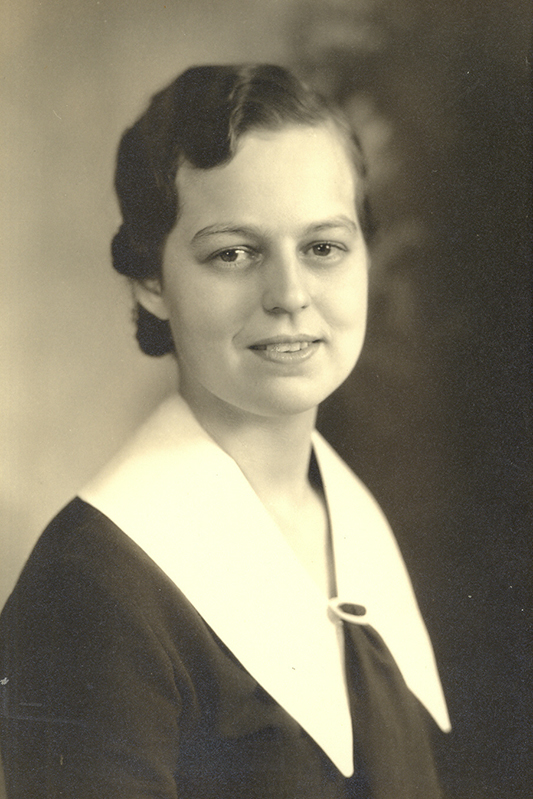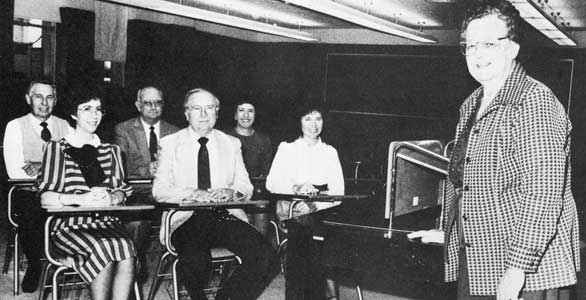“When the war was raging in the Phillipine Islands, I had become desperately ill. Because of lack of sufficient liquids, I lapsed into a toxic condition alternating between consciousness and unconsciousness. I was taken by ambulance to the hospital. A shell came through the front door. The madness of war reigned. Shells were exploding; there was chaos everywhere. People were brought in, some with legs shot off, others minus arms. I was helpless and without family or friends. The Lord whispered to me, ‘A thousand shall fall at thy side and ten thousand at thy right hand, but it shall not come near thee. Only with thine eyes shalt though behold and see the reward of the wicked.” (Psalms 91:7-8) The fever broke and I returned to my friends and fellow civilian missionaries. Truly God is a help in times of trouble." - Elizabeth Galley Wilson

Heroes come in all varieties. Some run to the sound of battle. Others place the safety of others above their own. And while less dramatic, some people, like Elizabeth Galley Wilson, are heroes because of their courageous demonstration of a life well lived.
Elizabeth Wilson was born in Lubbock, Texas, in 1911. She attended Southwestern Bible School in Enid, Oklahoma, graduating in 1936. By 1939, she had arrived in China under missionary appointment from the Assemblies of God; but under the threat of Japanese invasion, the American missionaries were evacuated to the Philippines for safety.
According to Elizabeth, representatives of the United States government did not advise Americans to leave the Philippines in advance of the Japanese invasion. “In fact, the United States High Commissioner to the Philippines as late as one week before Pearl Harbor discounted the possibility of war with Japan.”
On December 7, 1941, Japan destroyed the American Fleet at Pearl Harbor, Hawaii. Within hours, they launched a second attack on Clark Field, northwest of Manila.
The next morning, the Japanese bombed Baguio, the home of Elizabeth Galley, for the first time. Over the following weeks, the Japanese would seldom attack Baguio but frequently flew over. Each time the air-raid alerts sent locals scurrying to their improvised shelters. They lived in fear, not knowing when to expect an attack, and roads were filled with people fleeing the area. The missionaries lived ready to move quickly. They had one suitcase packed in case they were instructed to run to the hills, and another in case a ship came to take them home.
By December 27, less than 3 weeks after the attack on Pearl Harbor and after continues fly-overs, the Japanese landed in the Philippines. They fought their way up the mountains toward Baguio. Unable to defend the city, the military had abandoned Baguio and the city surrendered to the Japanese without firing a shot.
The men of Baguio decided to concentrate the people into four or five centers when the Japanese approached, where, in spite of the hardship, they all prepared for Christmas. Galley recalled, their Christmas fare included corned beef sandwiches, pork and beans, burned cake, and scorched candy.
For safety, the single women, most of the couples, and the children gathered in one building and waited. Throughout the evening other people came in from other villages. The building became so crowded they had to take turns sleeping. A number of them had only the clothing on their backs. Galley noted that many of the people did not even have a comb. Fifteen or twenty people used hers, attempting to make themselves presentable for the day. When no breakfast came, she opened two boxes of prunes and distributed one prune to each person around her.
The Japanese soldiers took the people from the building and formed them into three lines—one group of men, one of women, and one of children. While they organized themselves, the soldiers searched their belongings taking anything of value. They also removed scissors and nail files, lest the prisoners harm themselves.
They stared into the barrels of machine guns as a Japanese interpreter informed them that they were prisoners of war. The man screamed, “If we find fire arms on any of you, you will all be killed.” The prisoners waited in fear, and the soldiers completed their search. When the missionaries returned to their building, they found their possessions scattered about.
Galley always recalled the haunting sound of the soldiers’ boots as they entered the buildings. The Japanese separated the men from their families and throughout the night she heard the sobbing of families divided.
Two days later, the Japanese soldiers were ordered to march their captives to Fort John Hay. They separated them into groups, and the children left first. Galley recalled seeing one young girl carrying a bundle in one arm and her doll in the other; while a little boy clung to his one possession, a red truck. The women followed a few minutes later, and the men brought up the rear.
According to Darren Lewis in his book, Captured By the Rising Sun, the barracks at Camp John Hay were filthy from days of bombing. The water lines had been cut by the retreating Americans. With water at a minimum and flies by the thousands, the first wave of dysentery soon broke out. Food shortages began immediately. The conditions were unsanitary, and dysentery plagued the camp. Weakened from hunger, the prisoners performed their required tasks then lay down to preserve their strength. Often times, the only way the missionaries stayed alive was by the Filipino people risking their lives to bring them food.
The guards forbade the prisoners from holding prayer meetings. Nevertheless four of the women came together for prayer. Two prayed while two watched for the guards. Husbands and wives met on the tennis court for one hour on Sunday afternoon, but had to remain ten feet apart.
 On January 31, 1942, the Japanese released the missionaries, only to reintern most of them the following day. Galley was among the few who were released, but although she had obtained her freedom, she had no way of supporting herself. The missionaries who had been freed were returned to the prison camp. Again, men and women lived in separate quarters. Each had assigned tasks, and they were under the constant scrutiny of guards. Food was scarce, yet the Japanese did not allow the Red Cross to distribute packages to the prisoners. For over two years she suffered the conditions of the camp and saw friends brutalized by their captors. Finally on February 3, 1945, the Americans arrived to free them. The ordeal was over, but recovery would take time.
On January 31, 1942, the Japanese released the missionaries, only to reintern most of them the following day. Galley was among the few who were released, but although she had obtained her freedom, she had no way of supporting herself. The missionaries who had been freed were returned to the prison camp. Again, men and women lived in separate quarters. Each had assigned tasks, and they were under the constant scrutiny of guards. Food was scarce, yet the Japanese did not allow the Red Cross to distribute packages to the prisoners. For over two years she suffered the conditions of the camp and saw friends brutalized by their captors. Finally on February 3, 1945, the Americans arrived to free them. The ordeal was over, but recovery would take time.
Teacher at Southwestern Assemblies of God University
Her imprisonment had been unexpected, but it did not change her commitment to her call. Elizabeth returned to Southwestern in 1948 as head of the missions department. There she taught new career missionaries the meaning of service and sacrifice. In 1952 she married Rev. A.E. Wilson, a former missionary to Africa. Two years later they went to Africa as missionaries.
In 1957 she rejoined the faculty at Southwestern, serving there until her retirement. A scholarship was established in the name of Arthur and Elizabeth Wilson to assist those planning a career in missions and the Texas State Legislature recognized Elizabeth Galley Wilson for her lifetime accomplishments.
